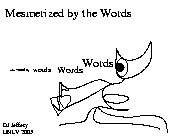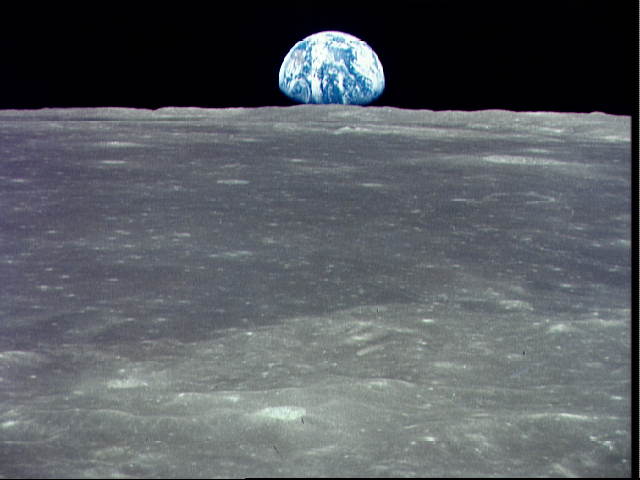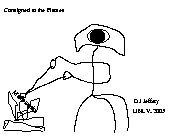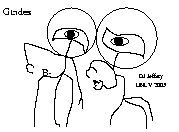- Galaxies Introduction
This is the course website / extended syllabus for a course in galaxies.For nuts and bolts details of the course, see Syllabus: Short Version???. For the official description, see Ast729: Galaxies.
There might be some changes since the course still in development.
The plan for the course is to cover parts of Cimatti: Introduction to Galaxy Formation and Evolution: From Primordial Gas to Present-Day Galaxies (2020), $57.59 (see also Cimatti et al. 2019: ArXiv posted intro chapter) which seems to be fairly broad, gentle introduction to galaxies. This allows us to build up from the bottom.
Cimatti is a required textbook and yours truly thinks it is a reasonable investment, but in many respects it will be dated in a few years and already must be a bit.
But we will also have journal club reports which makes us surf current research in galaxies. This allows us to build down from the top.
We will never meet in the middle.
Note that the Galaxies Course and Cosmology Course are good complements to each other.
This will be a relatively easy graduate course.
- Galaxies Lectures
- Galaxies Lectures
The evaluation summary is in the table below.
__________________________________________________________________________
Table: Evaluations Items
__________________________________________________________________________
Item Percentage Drops Comment
of grade
__________________________________________________________________________
Readings 0 % For study
Homeworks 0 % The study guide
journal club reports 20 % 2 drops 1 mark point each
2 in-class tests 40 % no drops
comprehensive final 40 % no drops
extra credit 0 % There is NO extra credit
__________________________________________________________________________
-
Tentative test schedule: Test 1: Oct09, Test 2 Nov13,
Final: See date and time specified at the
academic calendars site.
- Readings are NOT marked but you should do them.
- Homeworks are the study guide. The solutions will posted when the homeworks are posted. Yours truly is making them up as we go along. Try really hard before looking at the solutions. Self-testing is the key to test preparations. Report any mistakes that you find.
- Journal club reports: ∼ 10 reports. We'll try to get everyone to have the same number of reports, but allow 2 drops if the number reports is not quite the same at the end of the semester.
- The in-class tests will be out of 50 marks and consist of two parts:
- 10 multiple-choice questions intended as easy warm-up questions worth 2 marks each.
- 3 full-answer questions worth 10 marks each. Two of these will be drawn from the homeworks, maybe cut-down a bit for test mise-en-scene. The third question will be new if yours truly can think of one.
- The final is 2-hour comprehensive final and will probably be 20 multiple-choice questions intended as easy warm-up questions worth 2 marks each and 5 or so full-answer questions with 3 or 4 drawn from the homeworks, maybe cut-down a bit for test mise-en-scene.
Yours truly does NOT use a fixed scale for letter grades. I just draw my own lines where I see fit at the end of the semester.
Until the end of the semester, I just use a curve which fixes the GPA at about 3.
I don't use WebCampus. I just post grades under anonymous aliases.
You can choose your own alias. It has to be absolutely NOT identifiable as anyone.
See Amazon books, Library Search, and NASA ADS search.
- Andrea Cimatti (Author), Filippo Fraternali (Author), Carlo Nipoti (Author), 2019, 582 pages, Cambridge Univ. Pres, "Introduction to Galaxy Formation and Evolution: From Primordial Gas to Present-Day Galaxies": It seems to cover cosmology at about the level of Liddle (2015), but also all of galaxy formation and evolution. It has NO problems. I've a copy and may use it in the future for both Ast727: Cosmology and Ast729: Galaxies.
- Coles, Peter; Lucchin, Francesco, 2002, 520 pages, "Cosmology: The Origin and Evolution of Cosmic Structure": About the level for a grad course, but a bit dated.
- Mark H. Jones (Editor), Robert J. A. Lambourne (Editor), Stephen Serjeant (Editor), 2015, Cambridge - Open University, "An Introduction to Galaxies and Cosmology": More of undergraduate level and has problems.
- Kunze, Kerstin, 2016, arXiv, 36 pages, "An introduction to cosmology".
- Leclercq, Florent, et al. 2014, arXiv, 49 pages: "Cosmology: from theory to data, from data to theory": With Bayesian analysis.
- Andrew Liddle, 2015, "An Introduction to Modern Cosmology": See also Liddle (2015). You don't need to buy Liddle (2015) since you can read it online: ProQuest: Ebook Central: Liddle (2015). We can print from online. Are we allowed to print the whole thing over time? Maybe the server will let us, but 41 pages per user may be the legal limit.???? Can we use such printouts as a textbook for students?
- Mo, Houjun; van den Bosch, Frank; White, Simon, 2010, 840 pages, "Galaxy Formation and Evolution": See also Mo et al. Not at Library Search. See also stuff, stuff by Mo, and Bosch advertizement. It has NO problems.
- Ryden, Barbara, 2017, 300 pages, 4th year, "Introduction to Cosmology": 2nd edition well reviewed.
- Ta-Pei Cheng, 2010, 456 pages GR with some cosmology. Also Ta-Pei Cheng, 2015, 292 pages, "Relativity, Gravitation and Cosmology: A Basic Introduction":
- Weinberg, Steven, 2008, 616 pages, "Cosmology": Really tough going, but great.
- Universe in Problems:
- Solutions of Friedman equations in the Big Bang model: Problem 23: Positive-curvature-matter universe: Exact solution a(eta),t(eta), where eta is conformal time.
- Solutions of Friedman equations in the Big Bang model: Matter and radiation: Problem 5: exact solutions for matter and radiation: No analytic solutions for a(t), but there is one for t(a) using Hudson-5,28. See also INTEGRALS CONTAINING THE SQUARE ROOT OF ax+b.
- Solutions of Friedman equations in the Big Bang model: Problem 18: age of the Universe
- Solutions of Friedman equations in the Big Bang model: Problem 23: closed dusty Universe, exact solution: Closed matter cosine universe.
- Solutions of Friedman equations in the Big Bang model: Problem 41: power-law cosmologies: Single power-law solutions.
- Evolution of Universe: Problem 13: The Matter-Cosmological Constant Universe Solution: See also SOLUTION OF THE FRIEDMANN EQUATION DETERMINING THE TIME EVOLUTION, ACCELERATION AND THE AGE OF THE UNIVERSE (2007), Frank Steiner, p. 12.
- See also arXiv-astro-ph/recent for the latest cosmology articles.
- arXiv-quant-ph/recent
- Astronomy My own online astro encyclopedia: no longer updated since Wikipedia has long surpassed it.
- Astrophysical Journal (ApJ)
- Books
- Eddie Baron's galaxies and cosmology course site
- Introductory Astronomy Web Lectures (IAWL) See, in particular, IAL: Cosmology.
- Christian Knobel Intro Cosmolgy, 2012 An introduction into the theory of cosmological structure formation, 2012, 102 pages. Seems good, current as of 2012.
- Lawden 2002 special relativity: Preface, Chapters 1--3. A good, quick introduction.
- Max Pettini: Physcial Cosmology Seems a good quick intro
in pdf lectures which are probably intended to be much like real lectures. Seems to be current as of
2012.
- Basic Concepts
- Newtonian Cosmology
- Relativistic Cosmology
- World Models
- Redshifts and Distances in Cosmology
- The Hubble Diagram of Type Ia Supernovae: Evidence for a Cosmological Constant
- Large Scale Structure
- Clusters of Galaxies: Spherical Collapse and Virialization
- The Intergalactic Medium On reionization and all that.
- Absorption Line Formation and the Curve of Growth
- Physical Properties of Lyman Alpha Forest Clouds
- Cosmological Implications of the Lyman Alpha Forest. I: The Repository of Most of the Baryons
- The Ionizing Background
- Gravitational Lensing
- Weak Gravitational Lensing
- Observational Tests of Big Bang Nucleosynthesis
- Mermin 1968 special relativity: Wow your friends with special relativity paradoxes and solutions.
- NASA ADS
- Nature
- Physics Links Look-up pages mainly. Not updated recently.
- Sean Carroll Lecture Notes on General Relativity, 1997
- Science
- Scientific American The inner circle SciAm.
- Wikipedia
-
 Alien mesmerized by words.
Alien mesmerized by words.
-
 Earthrise from Apollo 11, 1969jul16.
Credit:
NASA.
Earthrise from Apollo 11, 1969jul16.
Credit:
NASA.
 Well not quite.
Well not quite.
 Beware of aliens bearing grades.
Beware of aliens bearing grades.
Very reassuring I think.
- Historical intro similar to cosmology:
- IAL 4: The History of Astronomy to Newton Essentially, the history of cosmology from prehistory to Isaac Newton (1643--1727) including Newton's work.
- IAL 26: The Discovery of Galaxies A partial history of cosmology from Isaac Newton (1643--1727) to the 1920s.
- IAL 31: Cosmology Gives a brief history of cosmology in the 20th century.
- Wikipedia
- Wikipedia: Chronology of the universe
- Wikipedia: Graphical timeline from Big Bang to Heat Death Note that the left-hand vertical scale is tricky, for greater than about > 0, it is x=100*log(log(t_year)) and so t_year=10**(10**(x/100))).
- Wikipedia: Graphical timeline of the Stelliferous Era Note the vertical axis is tricky, but it was it says, log(y) where y is the number of years and then multiply by 10. Thus 10**6 years is 10*log(10**6)=10*6=60. Gollee as Gomer Pyle would say.
- List of cosmologists Sean, Ron, Avi, Saul, Adam, Brian, and Dave Schramm made the list, but not Ken and Bob.
- Wikipedia: Timeline of cosmological theories
- Friedmann equations and Elementary Solutions,
Parameters of Cosmology,
Cosmological Distance Measures:
- Christian Knobel Intro Cosmolgy, 2012, p. 9ff But Knobel expects you to know some general relativity before you begin. Gory.
- David Jeffery: Cosmological Distance Measures Explained It needs a lot of revision that it will probably never get.
- David Hogg: Distance Measures in Cosmology See also the article version Hogg, 2000, Distance Measures in Cosmology.
- Max Pettini 1: Basic Concepts
- Max Pettini 2: Newtonian Cosmology He derives the Friedmann equations from Newtonian physics plus special assumptions.
- Max Pettini 3: Relativistic Cosmology
- Max Pettini 5: Redshifts and Distances in Cosmology
- Sean Carroll Lecture Notes on General Relativity, 1997, Lecture 8, Cosmology But this is the end of his lectures, and so they assume you know all intro general relativity.
- Wikipedia
- Cosmological horizons:
- Thermal history of the observable universe:
- Max Pettini: The Intergalactic Medium On reionization and all that.
- Max Pettini: Large Scale Structure It has some stuff on recombination
- Wikipedia
- Inflation and
Particle Physics in Cosmology:
- Pralavorio 2013 Particle Physics and Cosmology, Les Houches
- Silverstein 2013 Les Houches lectures on inflationary observables and string theory, Les Houches
- Wikipedia
- Cosmological Structure Formation:
- Christian Knobel Intro Cosmolgy, 2012, p. 55ff on general relativistic treatment of linear structure formation.
- Christian Knobel Intro Cosmolgy, 2012, p. 29ff
on Newtonian .
- Frenk & White (2012), Dark matter and cosmic structure A review with a historical perspective from the giants.
- Max Pettini: Large Scale Structure It has some stuff on Jeans instability.
- Wikipedia
- Power Spectrum:
- Wikipedia
- CMB: Primary anisotropy There is a angular power spectrum plot.
- linear structure formation
- nonlinear structure formation
- Wikipedia
- Nonlinear Structure Formation
- Bernardeau 2013 The evolution of the large-scale structure of the universe: beyond the linear regime, Les Houches.
- Tinker et al. (2008) Toward a Halo Mass Function for Precision Cosmology: The Limits of Universality.
- Wikipedia
- Press-Schecter Formalism
- Galaxy Formation
- Cosmic Microwave Background (CMB)
- Galaxy Dynamics
- Gravitational lensing
Maintained (if that is the word) by David J. Jeffery, Email: jeffery@physics.nhn.edu
This file was updated (but probably not for the last time) 2016sep20 Tuesday